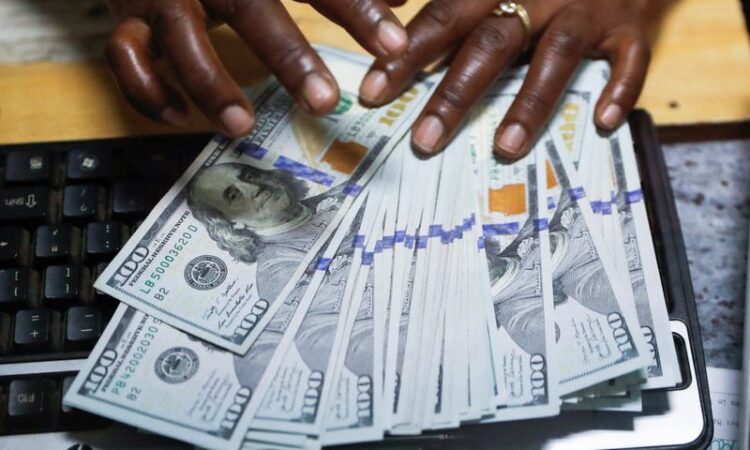
By Rae Wee
SINGAPORE (Reuters) – The resurgent dollar headed towards a second straight week of gains on Friday as a hotter-than-expected U.S. economy has pushed back investors’ and policymakers’ expectations of the trajectory of Federal Reserve rate cuts this year.
The greenback’s 0.17% gain for the week was somewhat capped by a slight stall in its rally since Thursday following a rare trilateral warning from finance chiefs in the United States, Japan and South Korea over the latter two’s sliding currencies, raising the risk of a potential joint intervention.
That’s as Asian currencies, in particular, come under immense pressure from the dollar’s strength.
“It is symbolic that they made that joint statement,” said Carol Kong, a currency strategist at Commonwealth Bank of Australia (CBA).
“Given the recent developments, the prospect of a joint Asian FX intervention is definitely rising. I’m not sure about whether or not the U.S. will be involved in that intervention, because ultimately, a stronger U.S. dollar will just help the FOMC’s inflation fight.”
The yen was last little changed at 154.61 per dollar, languishing near a 34-year low and not far from the 155 level which traders see as a new line in the sand that would prompt an intervention from Tokyo.
The Japanese currency was eyeing a weekly loss of more than 0.8% and was down 2% for the month thus far, ahead of the Bank of Japan’s (BOJ) monetary policy meeting next week.
BOJ Governor Kazuo Ueda said on Thursday the central bank may raise interest rates again if the yen’s declines significantly push up inflation, highlighting the impact currency moves may have on the timing of the next policy shift.
Elsewhere, sterling fell 0.08% to $1.2427, leaving it on track to lose 0.18% for the week. The euro eased 0.06% to $1.0637 and was set to clock a marginal weekly loss.
While expectations of a first Fed rate cut have been pushed back to later this year, traders expect the European Central Bank to begin its rate easing cycle in June, which will likely keep the common currency weak for some time.
“Once the ECB starts cutting, it’ll be apparent that global central banks will face divergent monetary policy easing cycles, and that will just exacerbate the strength in the dollar against the euro and other major currencies,” said CBA’s Kong.
Fed funds futures now show just about 40 basis points (bps)worth of cuts priced in for the U.S. central bank this year – a significant pullback from the 160 bps of easing expected at the start of the year.
The shift in rate expectations has come on the back of a slew of resilient U.S. economic data which has repeatedly surpassed expectations, alongside still-sticky inflationary pressures.
That’s also resulted in Fed policymakers pushing back on bets for U.S. rate cuts beginning as early as June, and Chair Jerome Powell early this week similarly said monetary policy needs to be restrictive for longer.
“Although policy easing may arrive a bit later than previously expected, we still believe the FOMC will start cutting rates before the year is out,” said economists at Wells Fargo. “We expect inflation to trend lower throughout the year, but progress will likely be gradual.”
Against a basket of currencies, the greenback rose 0.05% to 106.22, hovering near a more than five-month high of 106.51.
The Australian dollar fell 0.15% to $0.6411 and eyed a weekly drop of more than 0.8%.
Data on Thursday showed domestic employment fell in March after an enormous gain the month before while the jobless rate resumed its uptrend, a sign that the relatively-tight labour market was still on track to loosen, albeit at a slower pace.
The New Zealand dollar edged down 0.1% to $0.5895, and was similarly on track to lose 0.7% for the week.
(Reporting by Rae Wee; Editing by Sonali Paul)



